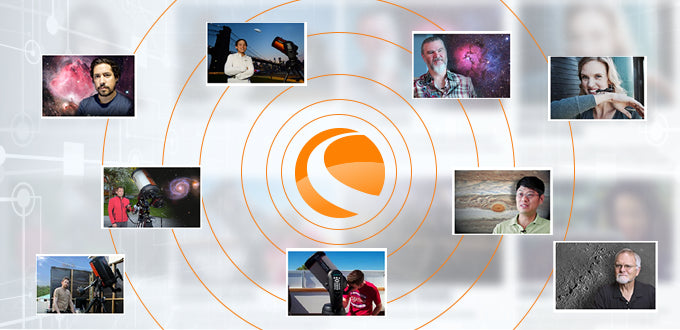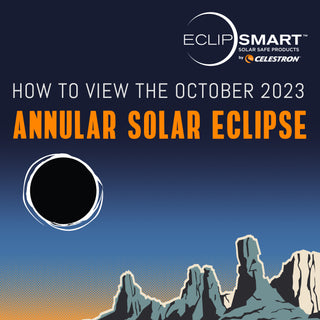Remembering 2022
December 28, 2022
As 2022 winds down, we remember the moments that made this year special for Celestron and the astronomy community. Peruse our list and relive our top 10 memories with us!

From mid-June to early July, we witnessed a rare planetary alignment. This unusual event featured five bright, naked-eye-visible planets parading across the morning sky with the Moon. An alignment like this only happens once every 19 years. To learn more, click here

We are heading back to the Moon! Artemis I’s historic voyage was the first step in a more extensive program that will eventually return astronauts to the Moon and lay the foundation for a crewed mission to Mars. With this mission’s resounding success, we can’t wait for Artemis II in May 2024!

In May 2022, our popular, patented sky recognition technology came to two massive Dobsonian telescopes—an 8” and a 10”. With their high-quality construction, simple design, and intuitive technology that works with your smartphone, they’re the ultimate telescopes for serious beginners.

On the night of November 7-8, 2022, observers witnessed a total eclipse of the Moon and saw our celestial neighbor turn red! In an exceptionally long eclipse, the Moon remained in the umbra for nearly an hour and a half. We will not see a Total Lunar Eclipse again until March 2025, which made this eclipse even more memorable. Read more here

NASA’s DART mission, the Double Asteroid Redirection Test, was a crucial step in protecting Earth from future wayward asteroids. On September 26, NASA intentionally slammed a satellite into the asteroid Didymos in an attempt to redirect its trajectory. DART successfully altered the asteroid’s orbit and created a debris tail. This mission paved the way to protect Earth from asteroid impacts—and hopefully prevent humanity from going the way of the dinosaurs!

In December, the prestigious Cornell Lab of Ornithology released a report analyzing two dozen affordable full-size binoculars. Celestron’s TrailSeeker ED took top honors, and our Nature DX ED and TrailSeeker earned high marks, too. We can’t wait to go birding with these binoculars in 2023! Read the report here
- TrailSeeker ED 8x42mm – Overall Top Pick for image quality and comfort
- TrailSeeker 8x42mm – Overall Top Pick for excellent image and ergonomics
- Nature DX ED 8x42mm – Solid Choice for good images, ergonomics, and budget

Don’t let dew get you down! Celestron’s new dew prevention products are here to help you combat condensation. The lineup includes Aluminum Dew Shields, Dew Heater Rings, and Smart DewHeater Controllers keep your optics clear so you can enjoy observing longer—even in humid conditions. Shop Now

We have two exciting new Celestron partnerships. In September, we joined forces with orbital logistics and space mining leader TransAstra Corporation to jointly develop powerful and economical ground- and space-based telescope systems. Then, in November, we announced a partnership with Privateer Space, the data and intelligence platform powering the future of space sustainability, to allow Celestron telescope owners to participate in Privateer’s work in accurately tracking the thousands of human-made objects in Earth orbit.
- For more information on our TransAstra partnership, click here
- For more information on our Privateer partnership, click here

NASA took one giant leap forward in studying potential life beyond Earth. In January, the agency released evidence from its Cassini spacecraft that revealed a hidden ocean under an ice crater on Saturn’s moon, Mimas. NASA has been studying several moons of Saturn and Jupiter with liquid oceans—where alien life may thrive below the surface.

On July 11, NASA released the James Webb Space Telescope’s first dazzling images. Launched on December 25, 2021, the James Webb Space Telescope (JWST) has already captured groundbreaking images and made countless scientific discoveries.
In less than six months, JWST has—
- Detected light from newly discovered exoplanets.
- Imaged distant galaxies that formed 400 million years after the Big Bang.
- Captured infrared images of celestial objects with its NIRCam and MIRI cameras.
- Provided new information on complex galaxies.
Click here to learn more about JWST and see the images it captured.


























